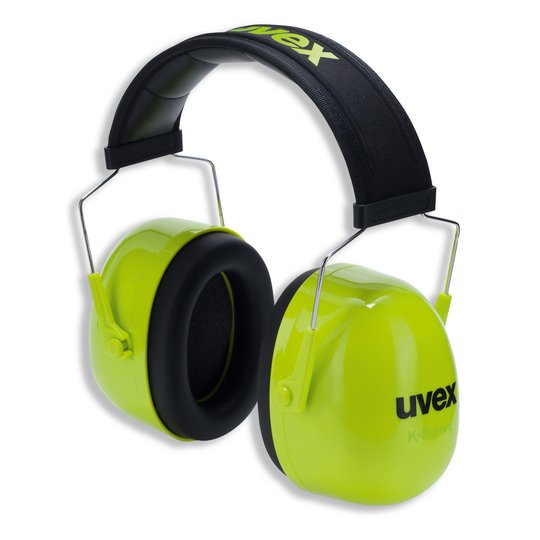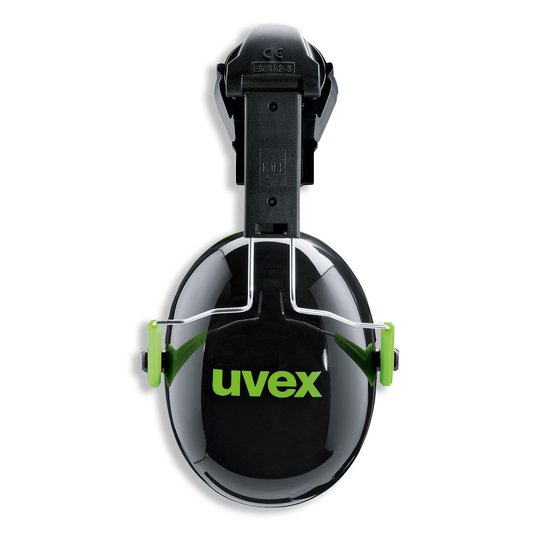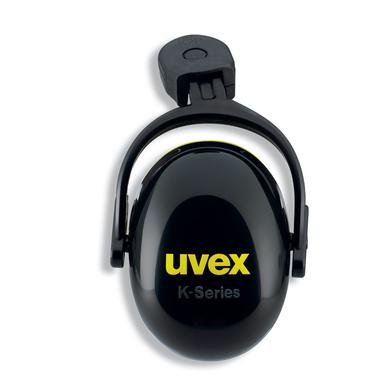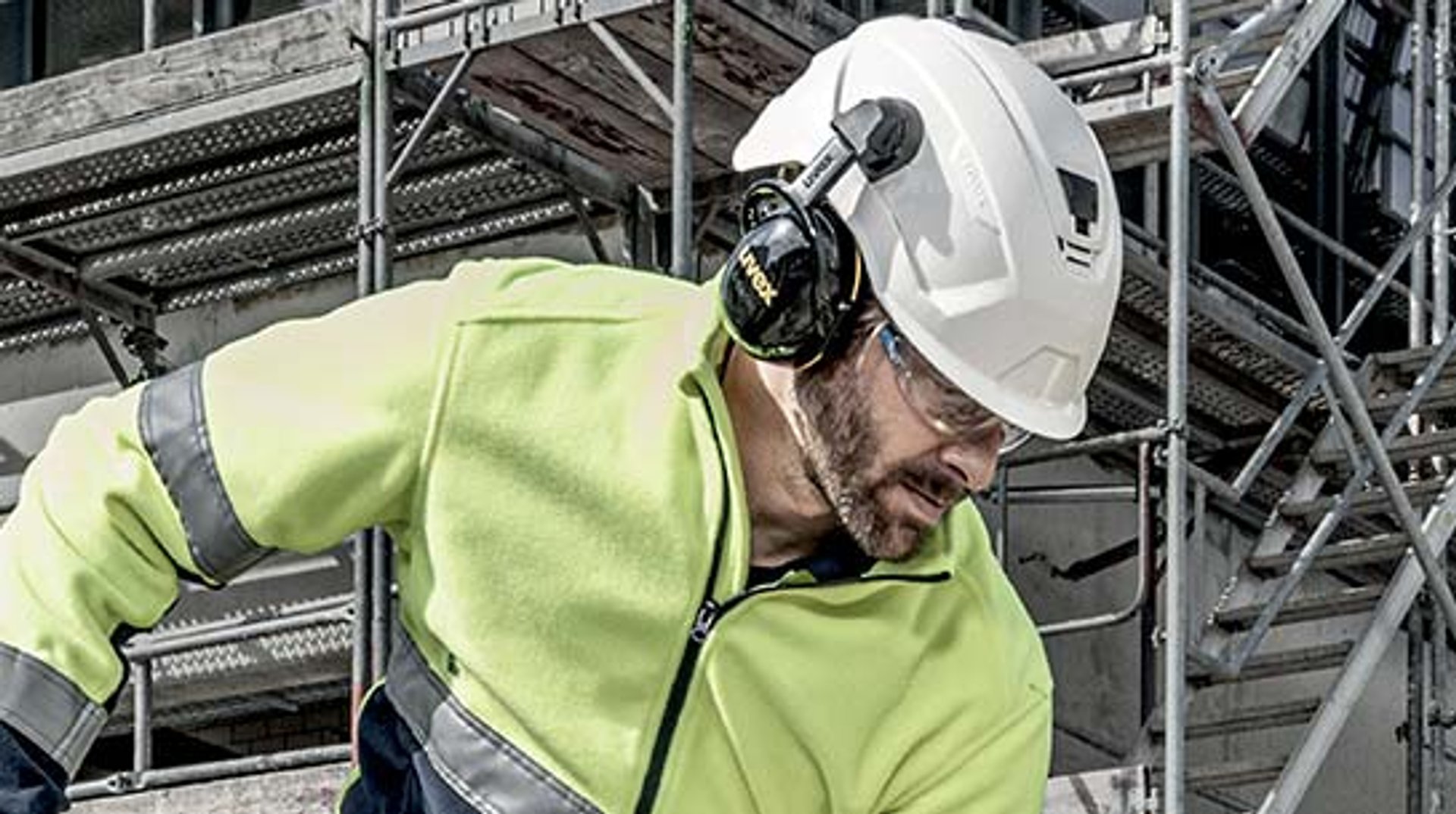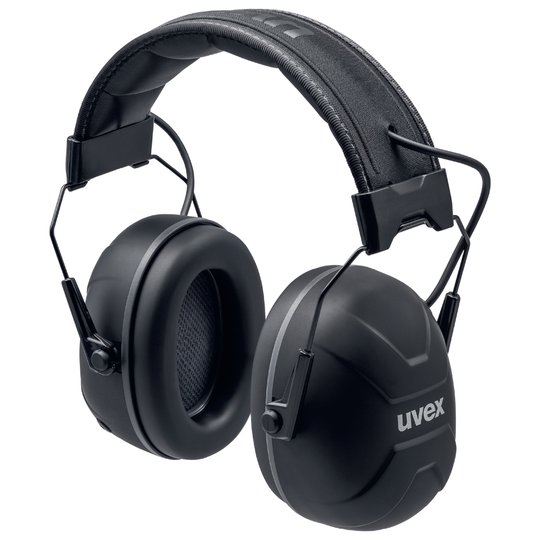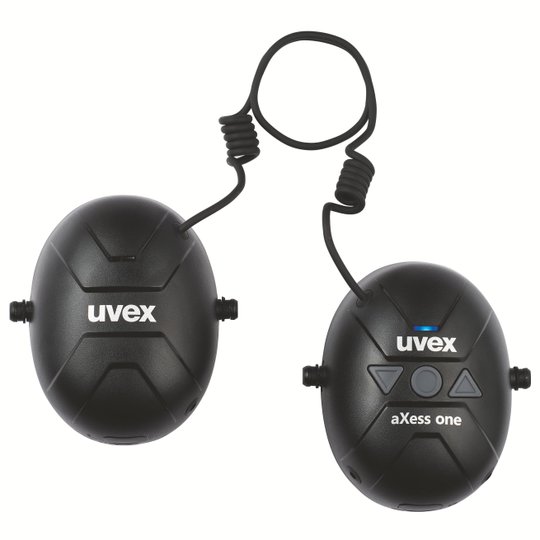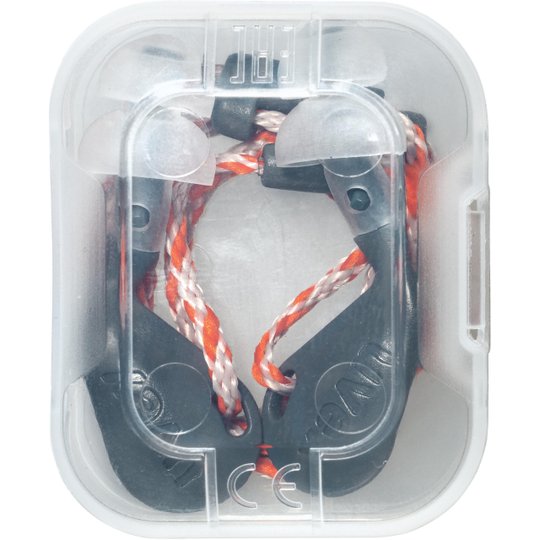At uvex, it is our fundamental belief that everyone should go home from work in the same condition they went to work in. Our mission of protecting people influences every aspect of our daily operations and is in our DNA. This includes protecting your hearing. But what do we mean by that?
Keep humming your favourite tune (maybe put it on in the background whilst you read) and let’s go through the “what”, the “why” and the “how”:
WHAT EXACTLY IS HEARING LOSS?
There are 4 types of hearing loss:
- CONDUCTIVE hearing loss is often temporary and caused by infections, ear wax, foreign bodies etc. and generally can be treated or clears up naturally. When we speak about hearing loss and say ‘when it’s gone, it’s gone’, we are referring to sensorineural, mixed, and neural hearing loss, which are permanent
- SENSORINEURAL hearing loss is permanent and is the most common type of hearing loss, either caused by noise or presbycusis (old age). In most cases, the hair cells that send the signals to the brain are damaged or have died naturally.
- MIXED hearing loss is a combination of conductive and sensorineural hearing loss which often results in partial impairment.
- NEURAL hearing loss is damage to the auditory nerve (the nerve connecting the inner ear with the brain) and is permanent.
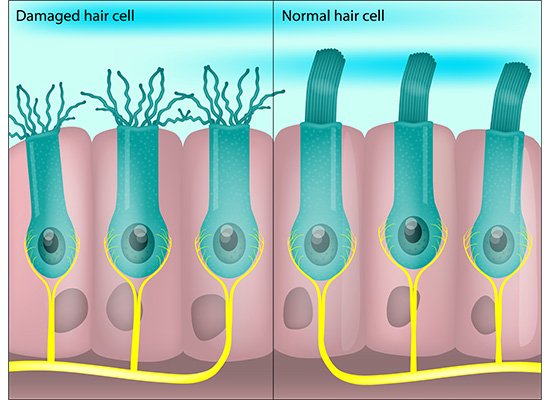
Profound deafness is defined as not being able to hear sounds below 95 dB 1
To put that into context, a jack hammer 15m away is about 90 dB!
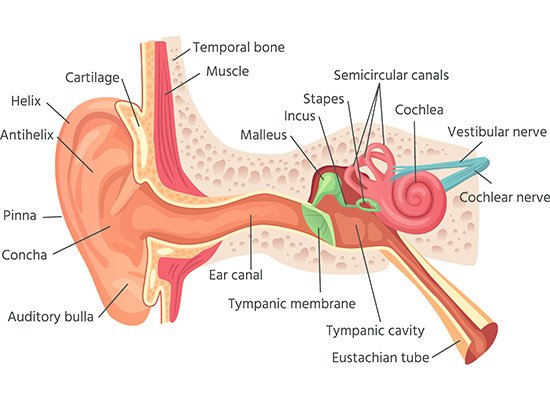
That is the biological and physiological explanation, but in ‘real’ terms, what is hearing loss?
- Hearing loss is coming home after a hard day at work and the new season of your favourite show has just dropped on your streaming service and you struggle to hear it or can now only follow it with subtitles.
- Hearing loss is going on a first date, and you go to a busy restaurant, and you can’t follow the conversation.
- Hearing loss is asking people to repeat themselves, perhaps in meetings when there is background noise, because you couldn’t hear the first time.
- Hearing loss is not being able to hear your child’s, or grandchild’s, first words
WHY DOES HEARING LOSS MATTER?
Hearing loss can affect your ability to communicate, enjoy music, or hear warning signals. It can lead to social isolation, depression, and even cognitive decline. In the workplace, it can reduce productivity and increase the risk of accidents.
Did you know that noise induced hearing loss is the most common, permanent, and irreversible injury in the world?2
In work environments in the UK, it is a legal requirement stated in the Health and Safety at Work Act 1974 to protect employees whilst at work. Section 2.1 “It shall be the duty of every employer to ensure, so far as is reasonably practicable, the health, safety and welfare at work of all his employees.” 3
Having said that, in the UK alone there have still been 11,000 cases per year since 2020 4 of people who have hearing problems caused or made worse simple by going to work, resulting in 85 cases in 2022 of occupational deafness 5.
That is 85 cases too many, don’t you think?
It is a legal requirement, but there are also monetary implications for any company that does not put the health of its workforce as a priority. A compensation claim for slight or occasional tinnitus with slight industrial noise induced hearing loss can range from £7,000 to £12,500 per case, and total deafness caused by work can be anywhere from £90,000 - £109,000 6.
Companies have a responsibility to their employees, but employees also have a responsibility to protect themselves, and colleagues too.
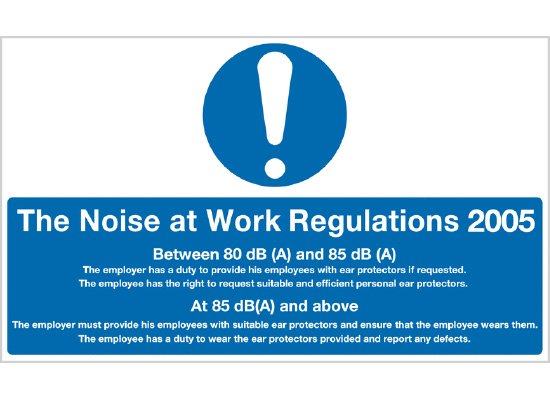
| The Health and Safety at Work Act 1974 |
| Section 7 (a) It shall be the duty of every employee while at work— to take reasonable care for the health and safety of himself and of other persons who may be affected by his acts or omissions at work. |
When it comes to noise specifically, the Control of Noise at Work at Work Regulations 2005 details the duties of the employer, and the employee.
WHAT CAN YOU DO TO PROTECT YOUR HEARING AT WORK?
Education is paramount; understanding noise, the regulations, the standards, how to select the correct hearing protection and fit hearing protection properly, as well as the consequences of not doing so, are imperative for the company and the wearer. There are a few things to highlight that are useful to know and implement but the below is only the start of a comprehensive hearing conversation programme.
The first step would be to understand the noise you have in your workplace. This can be achieved by having a noise assessment and survey undertaken by a competent person. Noise survey results will show the daily or weekly exposure levels, the peak exposure levels, and the frequencies of the noise. This will allow decisions to be made on factual information and ensure the right level of protection is achieved - and with the case of noise, not to overprotect.
Overprotection can lead to the wearer not being able to communicate effectively, not hear alarms or other emergency signals, or even moving machinery, which could result in an injury, or worse. Overprotection could also lead to the wearer potentially feeling isolated and have negative consequences for their wellbeing. It is important to select the correct hearing protection to get the correct balance of protecting by bringing the noise to a safe level, but not overprotecting and causing isolation.

BUT WHAT IS A “SAFE LEVEL”?
At a daily or weekly exposure of 80 dB the employer must provide information and training and make hearing protection available, and the employee has the right to request suitable hearing protection.
At a daily or weekly exposure of 85 dB the employer is required to take reasonably practicable measures to reduce the noise. If the noise cannot be controlled, then the use of hearing protection is mandatory. The employee has a duty to wear the hearing protection and report any defects.
Noise must not exceed a daily or weekly exposure of 87 dB or a peak sound pressure of 140 dB.
| Lower exposure action values (daily or weekly average noise exposure level at which the employer has to provide information and training and make hearing protection available.) | Upper exposure action values (daily or weekly average noise exposure above which the employer is required to take reasonably practicable measures to reduce noise exposure. The use of hearing protection is also mandatory if the noise cannot be controlled.) | Exposure limit values (levels of noise exposure which must not be exceeded. The exposure limit values take in to account hearing protection provided by the employer) |
| Daily or weekly exposure of 80 dB | Daily or weekly exposure of 85 dB | Daily or weekly exposure of 87 dB |
| Peak sound pressure of 135 dB | Peak sound pressure of 137 dB | Peak sound pressure of 140 dB |
Like with any hazard, PPE is always the last line of defence. Noise is no different and the hierarchy of control must be followed:
- ELIMINATE: Can the noise be eliminated?
- SUBSTITUTE OR REDUCE: Can the noise levels be reduced? For example, by investing in quieter or newer machinery?
- ENGINEERING CONTROLS: Can engineering controls be put in place such as acoustic bays?
- ADMINISTRATIVE CONTROLS: Can people be kept away from noisy areas? Or spend less time in noisy areas?
- PPE: If the noise levels are still above safe levels, hearing protection to be provided and worn.
WHAT IS THE RIGHT HEARING PROTECTION FOR YOU?
With so many choices of hearing protection available, how do you do know what hearing protection to choose? It can be confusing knowing what to select. For “in ear” options, do you choose roll down (disposable) foam plugs? Or reusable ear plugs? Or “over the ear” options?
The answer: Involve the wearer in the selection process. Involving the wearer in the selection process will help to support a successful hearing conservation programme as we all know, the best PPE is the PPE that gets worn, and if its worn, you are better protected. If the wearer is involved from the beginning and throughout the selection process and selects hearing protection specifically for themselves, there is no excuse for non-compliance.
Selecting hearing protection should, of course, be suitable for the noise levels but it should also be:
| Suitable for the INDIVIDUAL/ WEARER | Making sure any medical disorders are taken into account, ensuring the comfort of the hearing protection, and considering the size of the ear canal (our ear canals are different sizes, just like our hands and feet). |
| The ENVIRONMENT the wearer is working in | Is it hot or humid? Would choosing ear defenders in such an environment cause sweat around your ears? Is it dusty and dirty? Again, with ear defenders could dirt get onto the cups easily which are against your head? Or if your hands get dirty and then you have to roll down a new pair of plugs and put them in your ear? Think about the environments you work in and the challenges they may present and factor it into the decision-making process. |
| Suitable for the TASK being undertaken | For example, you don’t want corded earplugs to be an entanglement risk. Consider the various tasks you undertake and the challenges they may present and factor it into the decision-making process. |
| Allow for COMMUNICATION and WARNING SIGNALS | As we now know, the point of hearing protection isn’t so you can’t hear anything, but to bring it to a safe level; we don’t want any wearer to feel isolated. It is important that communication is possible, even when hearing protection is worn. It is also important to factor in any warning signals and alarms that may be sounded so the wearer has their hearing protected but so they can also hear emergency alarms. |
| COMPATIBILITY: | If other forms of PPE need to be worn, then this should be part of the selection process too. To find hearing protection that doesn’t hinder other forms of protection, but to work in conjunction with it, to keep you safe. For example, if you need to wear a safety helmet, you may want to consider helmet mounted ear defenders, but then if you need eye protection too, and this is not part of the helmet, you may need to consider roll down or reusable ear plugs so your eye protection doesn’t affect the attenuation levels you receive by pushing out the cups of your ear defenders. |
Looks like a lot to remember, but below is a check list to consider, or when in doubt, just remember:

| Hazard (noise level) | Environment | Task | Individual | Communication | Compatibility |
Types of protector, and suitability for the work being carried out | Noise reduction (attenuation) offered by the protector | Compatibility with other PPE | How well the selected product is fitted | Pattern of the noise exposure; continuously or occasionally |
The need to communicate and hear warning sounds | Environmental factors such as heat, humidity, dust and dirt | Cost of maintenance or replacement | Comfort and user preference | Medical disorders suffered by the wearer |
THE TECHNICAL BIT
It is important, like with all PPE that they are tested, and conform to the necessary standards. In the UK, EN 352 is the standard for hearing protection - general use and requirements but then depending on the type of hearing protection, ear plugs, earmuffs etc, they must meet one of the following standards:

| BS EN 352-1:2020 | Earmuffs |
| BS EN 352-2:2020 | Earplugs |
| BS EN 352-3:2020 | Earmuffs attached to an industrial safety helmet |
| BS EN 352-4:2020 | Level-dependent hearing protection earmuffs |
| BS EN 352-5:2020 | Active noise reduction earmuffs |
| BS EN 352-6:2020 | Earmuffs with communication equipment |
| BS EN 352-7:2020 | Level-dependent earplugs |
| BS EN 352-8:2020 | Entertainment audio earmuffs |
| BS EN 352-9:2020 | Earplugs with safety-related audio input |
| BS EN 352-10:2020 | Entertainment audio earplugs |
In addition to EN 352, the acoustic performance must be ascertained for all certified hearing protection under BS EN 13819-2:2020 Hearing Protectors. It really is important to buy PPE that does conform to these standards so then you know that what you are wearing has the ability to protect you. I mean you wouldn’t buy a faulty toaster? You would buy one you know has been made to safe standards so it can’t harm you, or your family.
In addition to EN 352, the acoustic performance must be ascertained for all certified hearing protection under BS EN 13819-2:2020 Hearing Protectors. It really is important to buy PPE that does conform to these standards so then you know that what you are wearing has the ability to protect you. I mean you wouldn’t buy a faulty toaster? You would buy one you know has been made to safe standards so it can’t harm you, or your family.
| A-weighted noise level dB | Selecting a protector with an SNR of: |
| 85-90 | 20 or less |
| 90-95 | 20-30 |
| 95-100 | 25-35 |
| 100-105 | 30 or more |
Under BS EN 13819-2:2020 the attenuation is calculated as an average [of all subjects], minus a Standard Deviation. The attenuation data will give a Single Number Rating, often called the “SNR”.
The SNR is a calculated figure which gives an indication of the potential protection that a product will provide, if fitted and worn correctly. It can be used as the initial part of your method of selecting the protection required following a noise assessment. The SNR value can be used to compare the level of noise attenuation offered by different hearing protectors.
To determine the noise at your ear, you subtract the SNR value of the hearing protection chosen from the average noise level measured. The higher the SNR, the higher the level of noise attenuation provided by the hearing protection, if fitted correctly.
The HSE states “aim to get below 85 dB at the ear” and “protectors that reduce the level at the ear to below 70 dB should be avoided, since this over-protection9” Ideally, you would aim to get between 70 – 75 dB at the ear.
For example, you have a noise level of 98 dB, and the hearing protection chosen has an SNR of 26:
98 (dB) – 26 (SNR) = 72
Otherwise known as sufficient protection of your hearing; not under, or overprotecting. If fitted correctly that is! If not fitted correctly it may not give the full protection.
It is also good to consider the frequencies of the noise in your workplace. You may have noticed on hearing protection there are also HML values:
H M L are High, Medium, and Low frequency values. From the noise survey the frequencies will be determined, and hearing protection SNR values may differ depending on the frequency so check you have the right protection.
Don’t forget a 3 dB increase is doubling the noise level!
| SNR 37 dB | H 36 dB | M 35 dB | L 34 dB |
| SNRm 40.0 dB | Hm 39.1 dB | Mm 38.1 dB | Lm 38.0 dB |
| SNRs 2.8 dB | Hs 3.1 dB | Ms 3.2 dB | Ls 3.6 dB |
EDUCATION AND FIT
Everything mentioned so far is important but one thing that all people who wear hearing protection can do is to ensure they know how to fit them properly. Be honest, how many times have you seen earplugs sticking out of someone’s ear?
Education on how to fit your hearing protection is a legal requirement*, but more than this, if they are not fitted properly, they are not protecting properly.
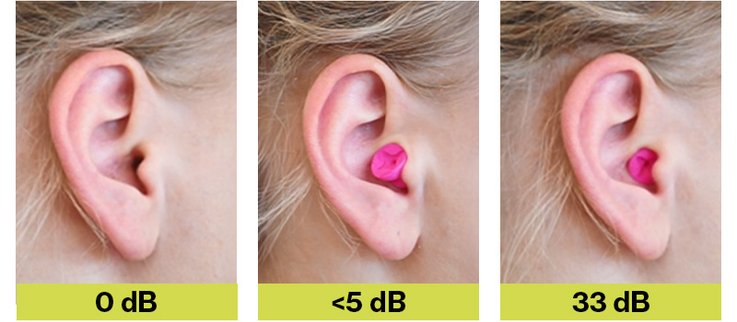
If you are unsure, ask for additional training and instruction, but see our guide below for fitting roll-down (disposable) earplugs. You can find this, and other useful information, including how to look after your hearing protection in our knowledge hub.

Roll down uvex disposable hearing protection plugs.
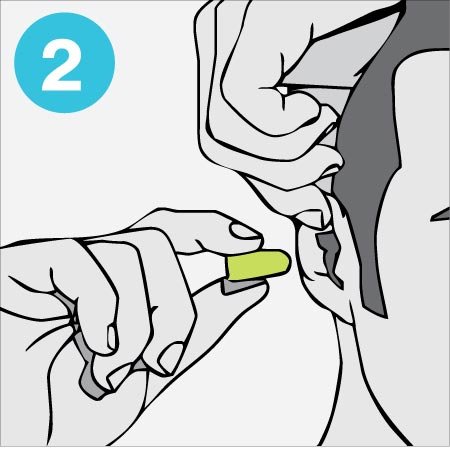
Put your arm over your head and pull your ear slightly upwards to straighten your ear canal. This helps to achieve a better fit.
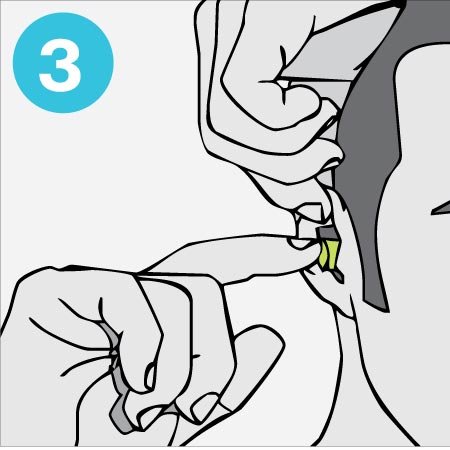
Insert plugs and hold in place while they expand. If they are not visible from the front, then they are in the right position.
It is a common belief that ear defenders cannot be fitted incorrectly as they are easier to put on but that doesn’t necessarily mean they are fitting and protecting you.
This can be due to a range of things; not covering the full ear, wearing other items of clothing or PPE “pushing out” the ear defender, for example hats or glasses side arms which breaks the seal of the cup and therefore the intended attenuation, which as we have mentioned, considering other items of PPE and compatibility with them should always be part of the selection process.
Do you know that helmet mounted ear defenders are not universal? They cannot be attached to any and every helmet, even if they might fit. It is important to understand that helmet mounted ear defenders should be used with helmets where they have been tested together as a whole unit. This is the only way to know for certain what SNR levels are truly achieved.

GOOD HOUSEKEEPING
Have you ever thought about where you put your hearing protection when you’re not wearing it? Do you put them down on your work bench? Or put them in your in your pocket? Or chuck them in the back of your van? The cleaning, maintenance and storing of your hearing protection, if reusable, are a legal requirement*.
When you put your plugs in your pocket, or put them on your work bench, all kinds or dusts and dirt, greases, oils or contaminants could find its way on to your hearing protection. Knowing how to care for, clean, replace parts if able to do so, and store in a clean box, is imperative to keep your hearing protection hygienic. After all, these products are either going around your ear, or in your ear … And so could the dirt it has picked up, if, not cared for correctly.
If your hearing protection is cleaned, maintained, and stored correctly, they will last longer. This has two main benefits; reducing costs by not having to replace the hearing protection as often but it is also better for the planet. By caring for and looking after your hearing protection, by helping to make them last longer, offers sustainable benefits as not as much will be thrown into landfill. Not to mention your administrators will thank you as they won’t have to order as regularly, saving their time (and saving more money)
Your hearing protection always needs to be cleaned, maintained and looked after, whether you can physically see the dirt or not, as you don’t want them to become damaged as then they may not protect you, and your hearing properly. Taking less than 5 minutes to clean and store your hearing protection properly, is worth it for that item to continue to protect your hearing. Don’t forget, if you find any defects, you have a duty, not only to yourself (it’s your hearing after all) but to your employers under The Control of Noise at Work Regulations 2005, to report them so they can be replaced. It is important to not wear your hearing protection if damaged, as they then may not protect you, and your hearing properly.

SUMMARY
The Control of Noise at Work Regulations 2005 requires employers to prevent, or reduce to a safe level, the risks to the health of their employees, from noise exposure at work. Employers must:
| ASSESS | Have workplace noise levels assessed by a competent person which details noise levels as well as any risk it poses to employees. |
| HEALTH SURVEILLANCE | Where there is a risk to health, occupational health surveillance must be undertaken by a competent person at regular intervals, and results recorded |
| ELIMINATE OR REDUCE | Following the hierarchy of control by eliminating the noise at source, where possible. Where this is not reasonably practicable, it must be reduced to as low as is reasonably practicable (before implementing hearing protection). |
| ACT | If, after noise reduction measures have been taken and one of the Exposure Action Values are exceeded then the relevant actions to protect employees hearing must be taken. |
| ZONES | Hearing protection zones must be marked |
| PPE | Providing hearing protection is a last resort. If needed as a control measure, it must be selected to protect, but not overprotect the wearer.
|
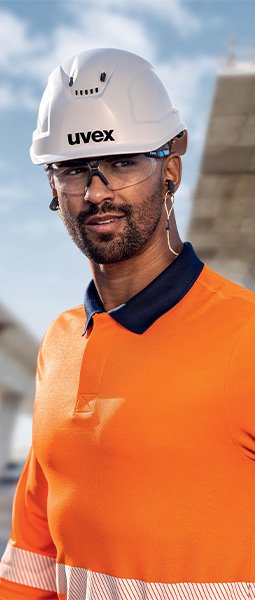
But don’t forget, it isn’t all down to the employer, as employees have a duty to “take reasonable care for the health and safety of themselves too”.
Now, that song you were thinking of? The one that reminds you of a good time in your life, that instantly improves your mood, and makes you happy, or excited, or relaxed……
…Now image you could never hear it again.
Citations
*The Health and Safety at Work Act 1974, Section 2.2 (c) “the provision of such information, instruction, training and supervision as is necessary to ensure, so far as is reasonably practicable, the health and safety at work of his employees” 11.
The Personal Protective Equipment at Work Regulations 12, “Where an employer or relevant self-employed person is required, by virtue of regulation 4, to ensure personal protective equipment is provided, they shall also ensure that appropriate accommodation is provided for that personal protective equipment when it is not being used.”
1 Sense.org: Deafness and hearing loss
2 World Health Organization (WHO)
3 Health and Safety at Work etc. Act 1974 (legislation.gov.uk)
4 Statistics - Noise-induced hearing loss in Great Britain (hse.gov.uk)
5 Statistics - Noise-induced hearing loss in Great Britain (hse.gov.uk)
6 The Judicial College Guidelines
7 Health and Safety at Work etc. Act 1974 (legislation.gov.uk)
8 The Control of Noise at Work Regulations 2005 (legislation.gov.uk)
9 HSE - Noise: Hearing protection
10 HSE - Noise: Hearing protection - real-world factors
11 Health and Safety at Work etc. Act 1974 (legislation.gov.uk)
12 L25: Personal protective equipment at work (hse.gov.uk)




